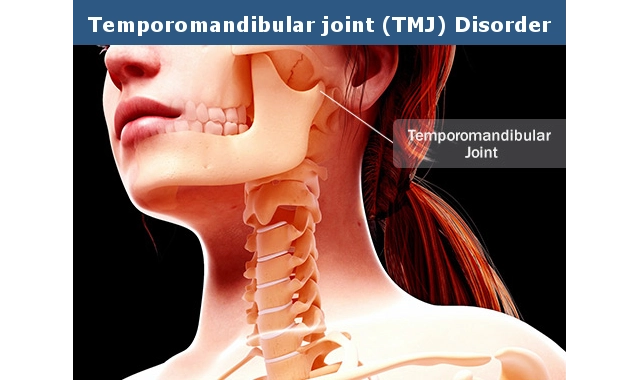
Temporomandibular disorder (TMD) is a problem and disorder associated with the jaws, jaws, joints, and facial muscles. TMJ, is short for temporomandibular joints, is the hinge that connects the Jaw to the skull. They are found on each side of the face; they slide over each other and allow you to move your Jaw for activities like yawning, talking, and chewing. But sometimes, the Jaw does not function the way it should, and this results in TMJ. It is commonly found in adults within the age of 20-40 years and is more likely to occur in women than men. TMJ allows movement from side to side, up and down, back and front. Attached to it is a cartilage that absorbs shock and prevents the bone from wear and tear
TMJ’s known cause has not been established, but it has been attributed to some underlying problems. The problem may be from the muscles or the joint. All other future symptoms take their causes from this. It also commonly arises from the dislocation of the joints, and several activities can lead to this. They include:
A popular myth suggests that braces may lead to a TMJ problem, but it has not been proven.
The most common symptom of TMJ and TMD is Jaw pain, which is relatable. TMJ has to deal with the jaw joints on both sides of the face. The pain experienced is usually dull and aching with the jaw muscles feeling tender. Aside from this, other symptoms may be experienced by patients suffering from TMJ. They include:
Other symptoms that may be experienced include dizziness, tinnitus, and vision problems, although this is not a common TMJ symptom. The symptoms vary with people, and while some experience multiple symptoms, others have no sign of pain associated with TMJ. Experiencing jaw pain does not necessarily mean that you have a TMJ disorder. Jaw pain not associated with TMJ will disappear on its own, but if you are experiencing jaw pains with other TMJ symptoms. It is advisable to see a doctor. Explain all TMJ symptoms to your physician.
Diagnosis of TMJ
TMJ is very difficult to diagnose; your physician will spend a lot of time trying to rule out TMJ. There are no particular tests or definitive exams for TMJ. It is challenging to diagnose and harder to treat. TMJ has many symptoms ranging from tender muscles, stiff Jaw, tinnitus, neck pain, and gum disease. All these symptoms may indicate another condition. The vagueness in all the symptoms is a contributing factor to the difficulty experienced in diagnosing TMJ. It may probably take 2-3 visits to your physician before he can be sure you have TMJ. Any physician can treat you for TMJ, but the best option is a dentist specializing in TMJ.
The following factors raise the chances of developing TMJ; the presence or absence of this risk factor does not mean you have TMJ. If you have many of the risk factors involved with TMJ, see your physician on what to do next.
You can reduce the risk of developing TMJ by emulating other ways of coping with stress. Avoid clenching and unclenching of the Jaw during stress and avoid jaw injury that may raise TMJ’s risk. Practice safe habits like wearing a helmet during bicycle riding or wearing a seatbelt.
There is different treatment for TMJ, but doctors are not sure of which treatment is more effective. Before getting any treatment on TMJ, it is better to get a second opinion. Over the years, some treatment is not effective, and sometimes they become harmful to the patients. Surgery is recommended when non-surgical procedures are ineffective but should be the last resort. This usually occurs when the case is severe, and the patients have no control over the symptoms. Surgery is a controversial treatment for TMJ because the effect is irreversible. There are medications for TMJ, but they come with side effects like drowsiness or weight gain. Acetaminophen is mostly prescribed for TMJ; it helps reduces the pain but does not treat the inflammation.
This is an electronic book that helps you treat TMJ and other related disorders. It provides a natural and safe way of treating this disorder, but you will need to adjust your lifestyle. For a significant result, a level of discipline and commitment is required. The book is divided into two segments. The first segment provides information about TMJ, the causes, risk factors, diagnosis, and symptoms. While the second segment discusses possible treatments and ways of healing TMJ. It gives a 3-steps approach of curing TMJ
Pros of the Book
Cons
May is Small Business Month, a time to honor and recognize the achievements of the… Read More
Swiss International University (SIU) is on track to be one of the world's most respected… Read More
In a session that left students buzzing with fresh ideas and practical insights, Invertis University… Read More
At the 21st Shanghai International Automobile Industry Exhibition, which is surging with the wave of… Read More
Liverpool, UK—House of Spells and Comic Con Liverpool are once again collaborating to bring the… Read More
Introduction In India's booming EdTech space, there's one name that's making waves among Telugu students… Read More